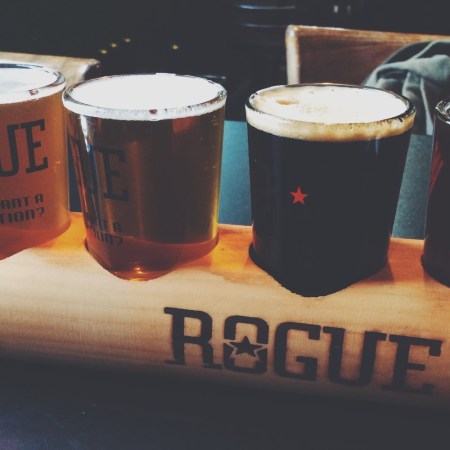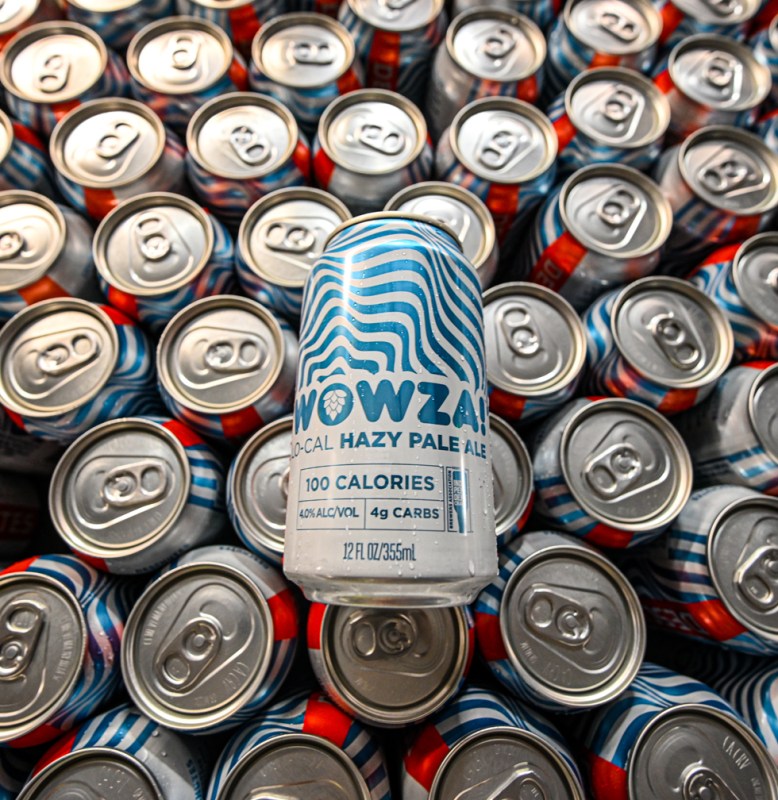
As anyone paying attention to our daily #stoopyhour posts on Instagram has no doubt noticed, beer consumption among InsideHook’s team during quarantine is up. Up like a farmer at dawn. Up like the jig when the cops arrive. Up like a Pixar film with the most heartbreaking opening sequence in cinematic history.
In short, we dig our beer.
And while each of our staffers has their own personal tastes, I’ve been particularly keen on WOWZA!, the new hazy pale ale from Bend, Oregon’s Deschutes Brewery that packs bold, hop-forward flavor and, miraculously, only has 100 calories. If that number doesn’t amaze you for a HPA, go ahead and Google the calorie count of your favorite light beer. We’ll wait.
Deschutes describes the ethos of WOWZA! with the slogan “embrace the impossible,” and based on the product, we can get on board with that. But we wanted more. Exactly how did they go about embracing the impossible? What was the methodology for getting in there to hug that slippery devil?
So we got under the hood with Deschutes’ assistant brewmaster Kyle Matthias to chat about the genesis of WOWZA!, his feelings on experimentation in brewing, and what the review process at a brewery really looks like (spoiler alert: it involves a bunch of people drinking beer together).
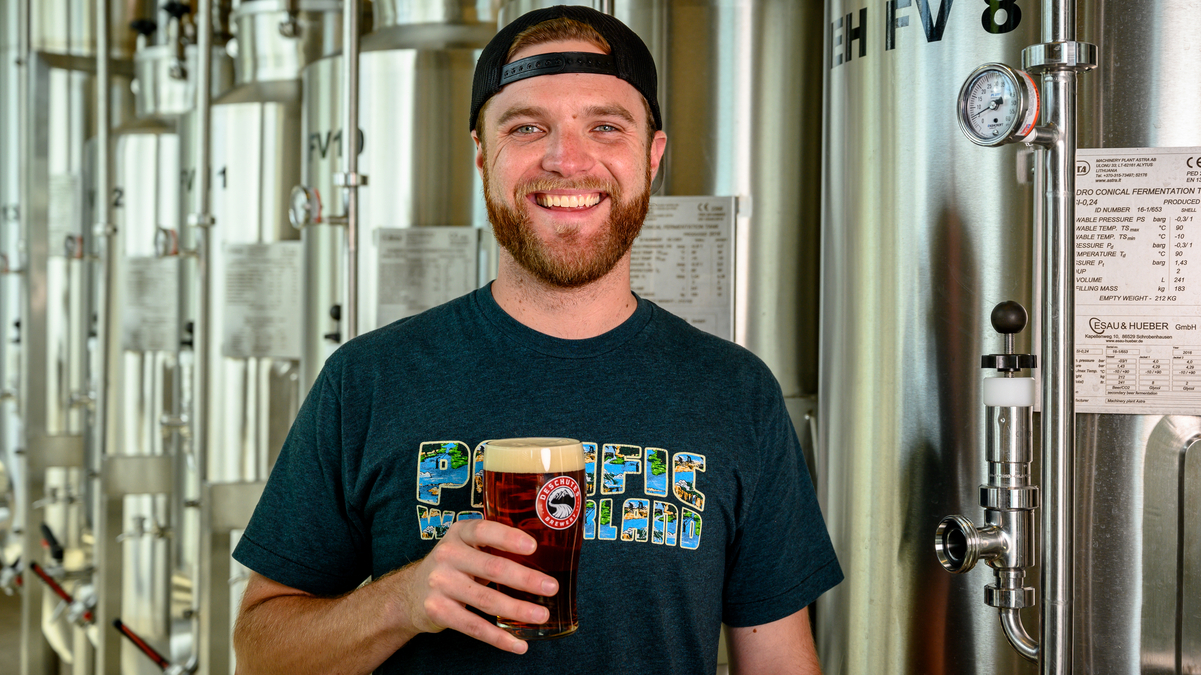
InsideHook: So I was reading an article that mentioned the Deschutes “Research and Development System.” Can you tell me a little bit about that?
Kyle Matthias: A lot of our research and development happens on the pilot system, which is what I’m responsible for running. Nuts and bolts of that is it’s a three-barrel, seven-vessel system. There’s a mash tun, a lauter tun, a pre-run tank and then two kettles and two whirlpools. What’s unique about the system is that you can split the wort stream after the pre-run tank into two kettles. So essentially you can take one mash and get two unique brews out of it. That really allows us to speed up the time of development, because we can essentially make one tweak and analyze side by side. Then once we get something pretty well dialed on the pilot end of things, it’ll take the next step, whether that be to the pubs or to full-scale.
What percentage of stuff that you guys tinker with shows promise? Do you typically have a good idea of what’s going to work, or do you sometimes make something and think, “Oooh, this was a bad idea”?
[Laughs] It’s been interesting because everything sort of builds off of another project in some ways. Like let’s say we try a hop combination and we’re like, “Oh, it didn’t really work in this beer, but I think it would work here.” So I wouldn’t necessarily say that there are failures — just things that we learn from. We do also do a lot of trials just for knowledge and research’s sake, so not everything is necessarily destined for sellable product that will go out to market.
What got you guys interested in what I’ve seen referred to as the “Better For You” beer space?
I think it was just consumer demand and seeing what was going on in the world as people are becoming more and more health-conscious, and we kind of landed in that space with Da Shootz!, our low-calorie pilsner. Then that served as the knowledge base for WOWZA!.
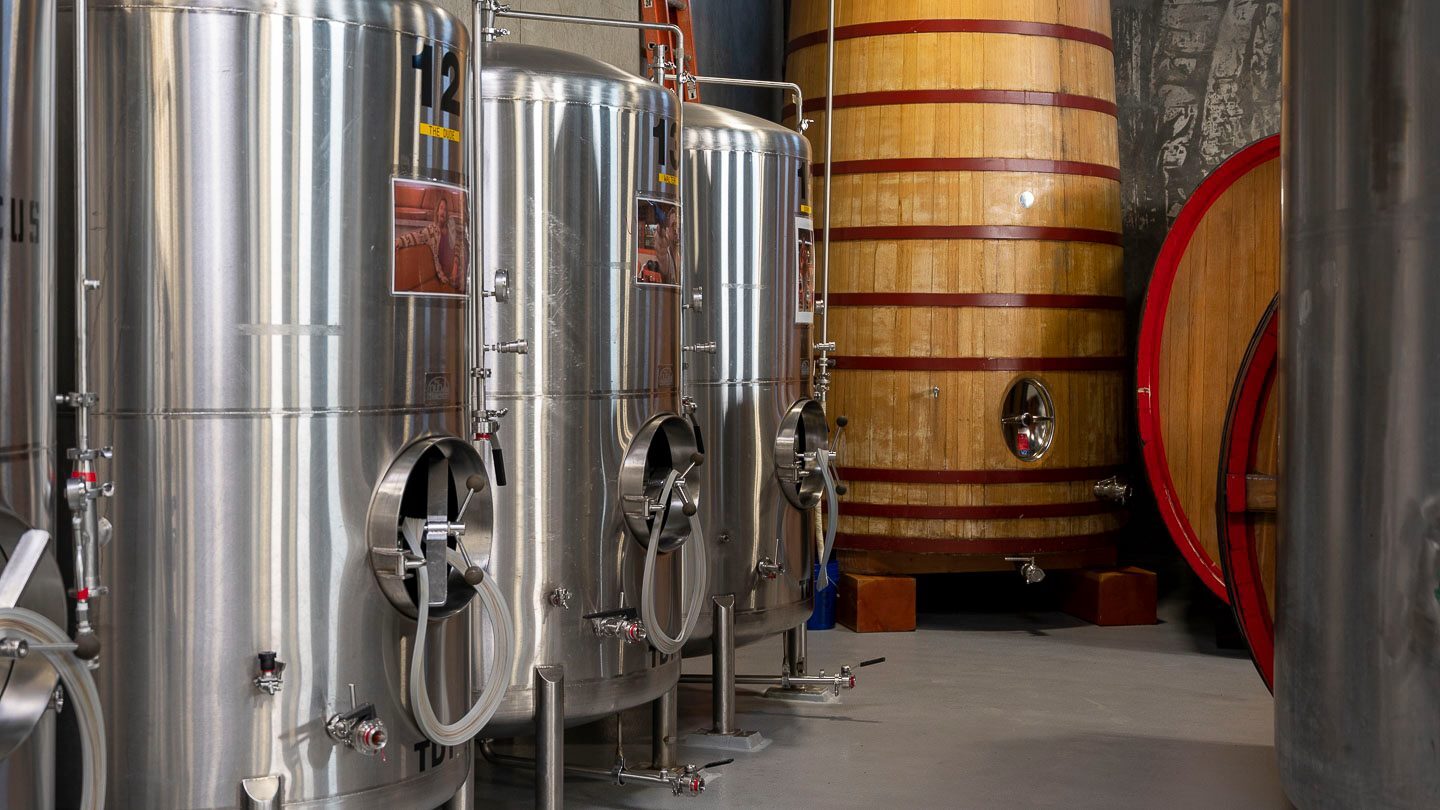
Prior to the development of Da Shootz!, was there any sort of bellwether where you guys thought, “Okay, low-cal beer can actually taste good”? I feel like traditionally everybody thought that for beer to be low in calories, it had to taste like water.
That’s a good point, because I think a lot of brewers, myself included, were of that same mindset and we kind of had to see it to believe it. There are a number of 4% beers out there that are not necessarily low-calorie, like Easy Jack from Firestone. That’s like 120 calories, so you’re only 20 calories off, but that’s an important 20 calories. So in that sense, I guess I knew that it was close to possible.
We were kind of developing as other breweries were developing, so there wasn’t so much out there. Once we got through development and had a few trials under our belts, we were like, “Oh shit, yeah, this could work.”
Is 100 calories the mark you’re trying to hit with these “Better For You” beers?
Yeah, at least for WOWZA! and Da Shootz!, and then we started messing around with even lower ABV beers to see where we could get the calories down to and started developing a 2.7% hoppy beer, we refer to in-house as a “petite IPA.” I think that came back at something between 85 and 90 calories and still very full flavored, certainly light in body like WOWZA! and Da Shootz!, but nonetheless a delicious beer and clocking in at even less than 100. So we just kind of wanted to continue to push the boundaries and see how low we could go.
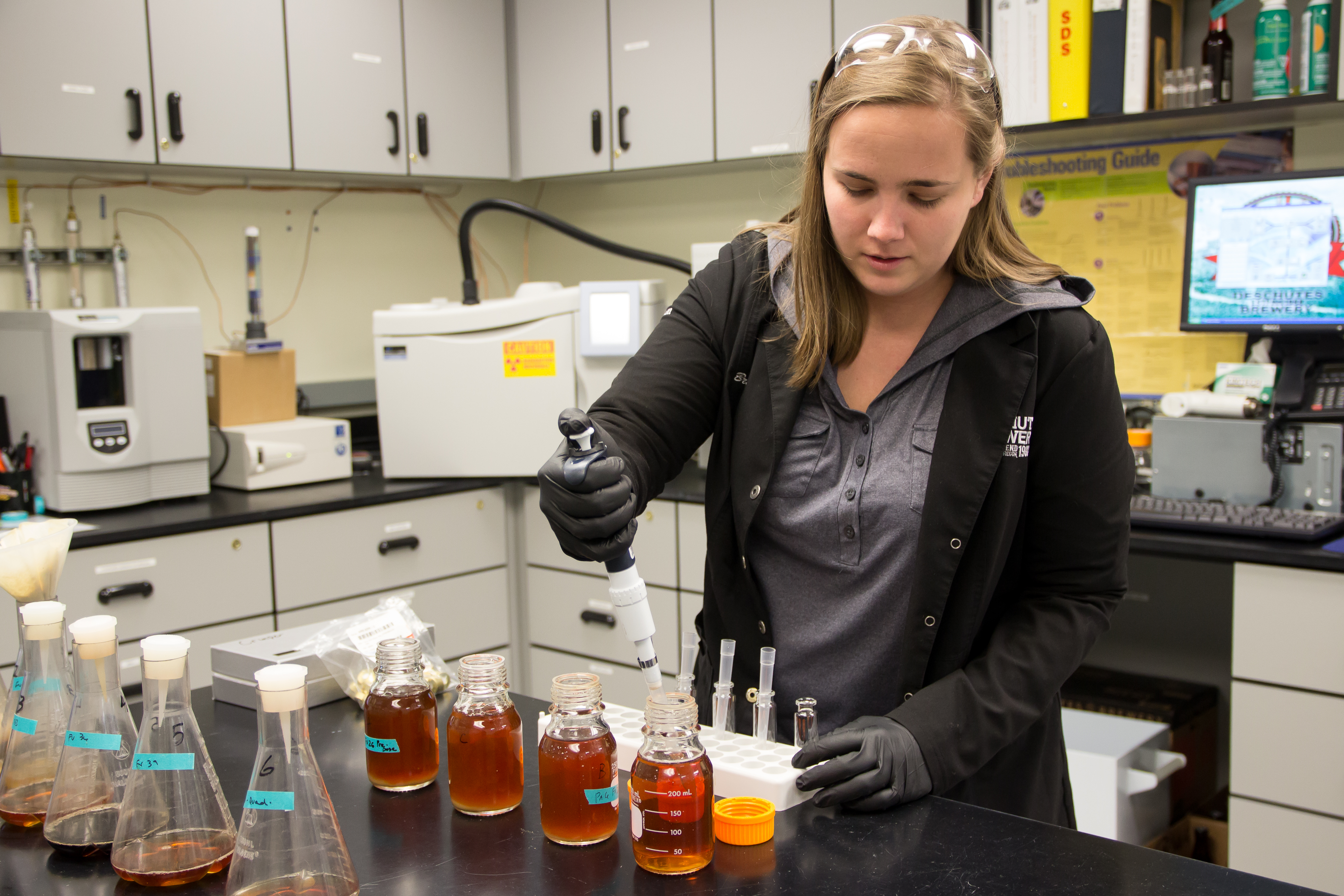
What are the inherent challenges in making WOWZA! in particular — a hazy pale ale that’s low in calories?
The way I look at it, the first challenge is just making sure you’re not blowing a beer that’s going to be inherently low in body out of the water with bitterness. Most of the hopping for WOWZA! comes in the cellar as a dry hop, to give you that hop flavor and aroma, but with little to no bitterness. So that’s why we wanted to keep our BU target low, to just ensure that it’s going to be balanced and not completely tipped one way or the other.
Then the other thing is the body piece. I think generally if you see a 4% low-calorie beer you expect it to be somewhat low in body, but we didn’t want it to just fall to watery like we talked about before with macro beers. To combat that, we added some chicory root to the brewing process, which provides a little bit of residual sweetness and body, but at a lower calorie content than a typical carbohydrate would. I think a typical carbohydrate has four calories per gram, whereas chicory has 2.6 or something calories per gram.
I wanted to ask about the chicory root. That’s an ingredient that is typically used in brewing other types of beer, but in a different way?
Typically people use the roasted chicory, which blends a coffee and chocolate sort of flavor (Ed. note: usually for porters and stouts). But this isn’t roasted. This is just straight-up raw chicory root used for that little bit of added sweetness and body. That was something that we definitely had to play around with to figure out how much of a calorie window we had and what’s the most amount of chicory root that we could add and still keep it under that 100-calorie number.
Who gets credit for the chicory root idea? Sounds like it’s kind of the lynchpin of the beer.
[Laughs] I think it was Veronica Vega, our director of new product development. We had seen monk fruit out there at Dogfish and there’s other ways — like Stevia — you could have gone about it. We talked to some suppliers that recommended xylitol and some of these other more artificial things. We wanted to make sure we were staying natural with it while also not just totally ripping a page out of the playbook of another brewery.
We knew there were other ways to get creative with it, and I think that’s kind of how we fell into chicory. We knew that it had been used in beer before, just in a different way. So we knew it was totally possible, but what we didn’t know is what sort of flavor, if any, was going to land in a more raw form. It was totally just, “Let’s brew it and see what happens, that’s the only way we can know.”
How much of brewing good beer do you think is the willingness to say, “What the hell, let’s try it”?
Dude, a ton. I do it a lot, honestly, just because it’s like, “We’re never going to know if we don’t try it.” For instance, I’m really into foraged beers lately, and we made a Baltic Porter that we brewed with porcini mushroom tea. We steeped mushrooms in it like, “Let’s just see what happens. It’s probably not going to be for everyone, but let’s learn something and see how we can apply it.” It turned out pretty awesome, and with that split brew system, we brewed the Baltic Porter both with them and without them. My personal preference was the one with them — it wasn’t exactly like you were getting this overwhelming earthy mushroom sort of character, but more or less like a subtle leatheriness and an added dryness to what’s typically a pretty sweet beer, so I think it made a little bit more drinkable.
Regarding WOWZA!, are there any other interesting ingredients or science-y elements of the brewing process you want to call out?
Not super science-y or anything, but this beer was our first foray into active dry hopping. That whole biotransformation and all of that stuff going on with the yeast, I think helps lend that fruity, juicy character to these types of beers, which certainly helps to give a little bit more perceived body for a beer that’s so low in sugar.
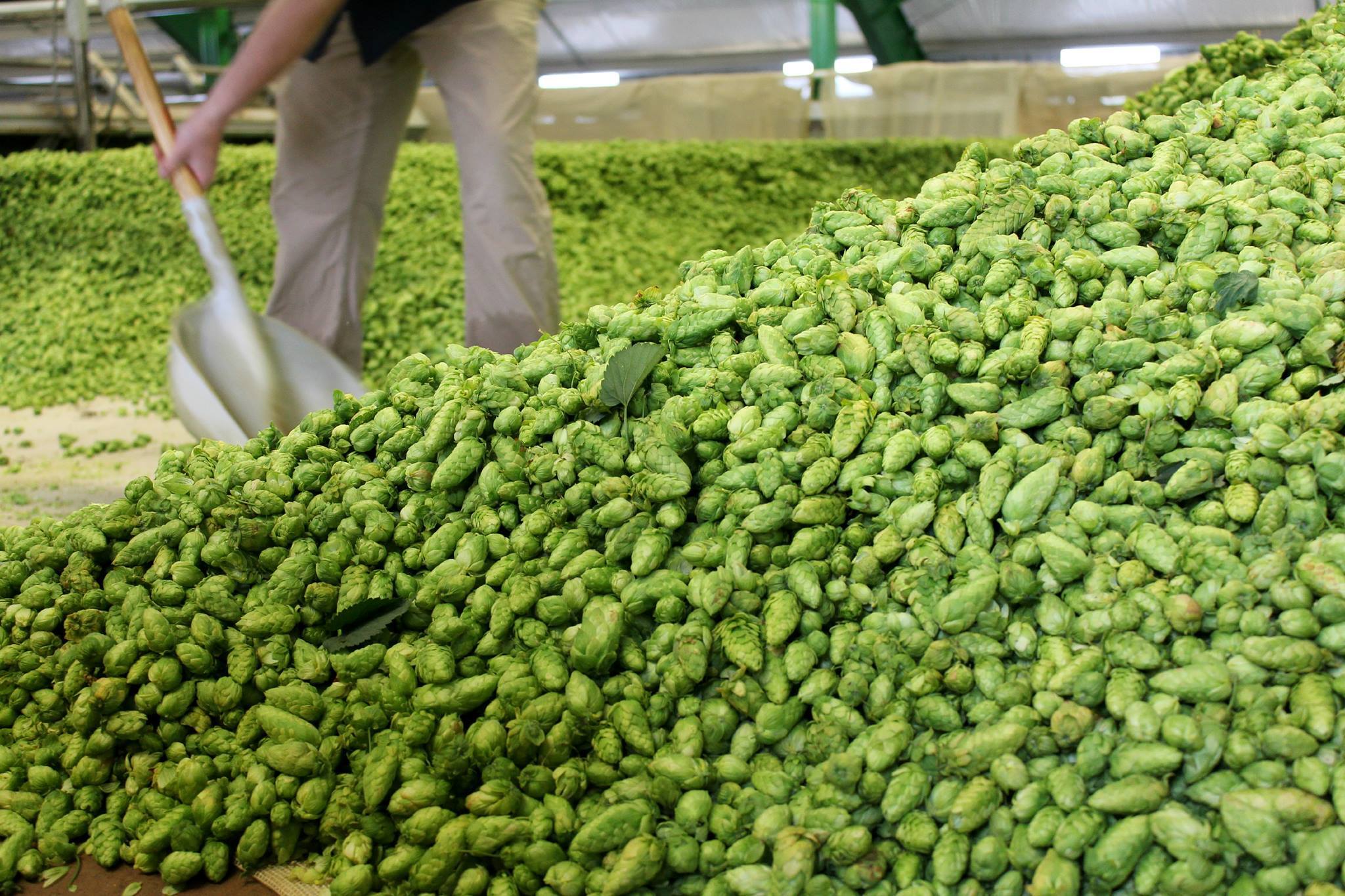
I’m interested to know what the taste/review/approval process looks like at Deschutes. Who all is weighing in and how?
Basically we’re handed the project at pilot with the goal outlined and then we brew it and bring finished product to a meeting that we have once a week. That includes myself, Veronica, our brewmaster, and people from sales and marketing, as well as people from the production side of things just to make sure that A) what we have here is marketable and B) it’s feasible at scale. We all get together and weigh in on if we think it delivers on the intention of the product, and then based upon feedback from that meeting, we go back to brewing if we need to, making whatever tweaks.
Is that meeting basically people sitting around drinking beer and talking about what they think of it?
Yep, basically. It’s kind of like what everyone probably wants to think that the day of a brewer is like every day. There’s some days you go in and there’s 15 glasses of beer that you have to sample through. Luckily it’s at the end of the day because even if you’re taking small sips of these things, eventually it can get to you. But yeah, you’re just sitting in a room with a bunch of other brewers and brewery folks drinking beer and talking about it. Of course, probably more analytically than most, but essentially that’s what it boils down to.
At what point did you guys start to get the feeling that you had a hit on your hands with WOWZA!?
It was interesting, because we landed on something that we liked relatively quickly. I was just looking back at brew data of those beers and our initial “Okay, we’re good to scale” came after only four trials. We were happy with it at the pilot scale, but then of course there’s always the risk of things being different at the large scale, because going from one and a half barrels to 150 barrels, there’s a lot of the things that can happen.
We got it to scale and brewed just a single brew of it again, just to hedge our bets. At that point we said, “You know what, it’s similar but the hop character is not the same. I think we want something more.” We went back to the drawing board and that’s when we switched things up to go to an active dry-hopping process and switched up the hop bills somewhat. Then that took just one more brew.
I dig the look of the can as well, how did that come about?
I remember our VP of sales and marketing Neal bringing that to that meeting and everyone was immediately drawn to it because it’s so different from any of our other Deschutes packaging. I think that he gets the … what’s the right word? The “unexpectedness” of this product, of this beer that is low calorie but so flavorful and so hop forward. I think the packaging really tells that story well.
Ed. note: Neal himself chimed in via email, writing “We called this particular packaging concept ‘the trick of the eye’ because we wanted people to know this beer is way more that you thought it could be. Throughout the branding process, we kept saying that this was “the impossible beer” because it really was a beer that was low calorie and low carb, but actually tasted great. The name itself literally just came from a reaction someone had when they tasted it for the first time. Naming beers is hard because there are so many out there, so I love it when names come to us like that.”
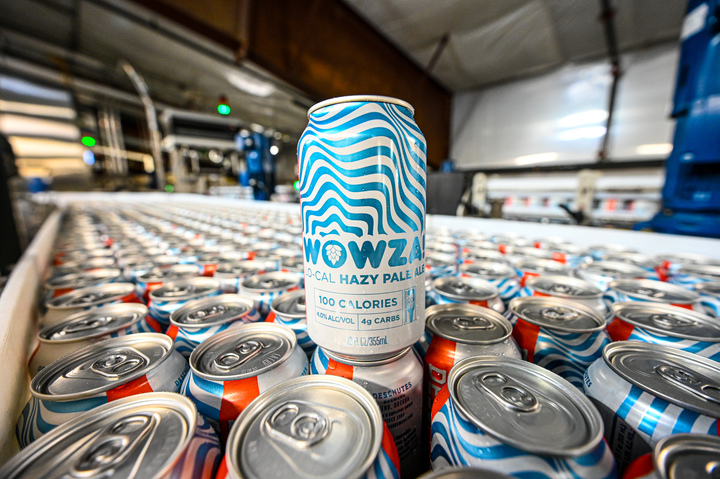
Okay final question: During this quarantine, what would you say WOWZA! is best paired with?
Certainly any sort of yardwork, if you can try to keep yourself busy out in the yard, especially now that things are starting to warm up a little bit. I would say video chats — it’s perfect for those Zoom meetings with your friends or those house party meetings with your friends or you’re doing trivia or poker or whatever and you want a beer that is flavorful and that you can drink a bunch of. Those instances are perfect for it.
Nota bene: if you’re keen to get your hands on some WOWZA! but don’t know where to look, step right this way and the fine folks at Deschutes will point you in the direction of the nearest place that stocks it.
Hero image courtesy of Deschutes Brewery
Every Thursday, our resident experts see to it that you’re up to date on the latest from the world of drinks. Trend reports, bottle reviews, cocktail recipes and more. Sign up for THE SPILL now.




